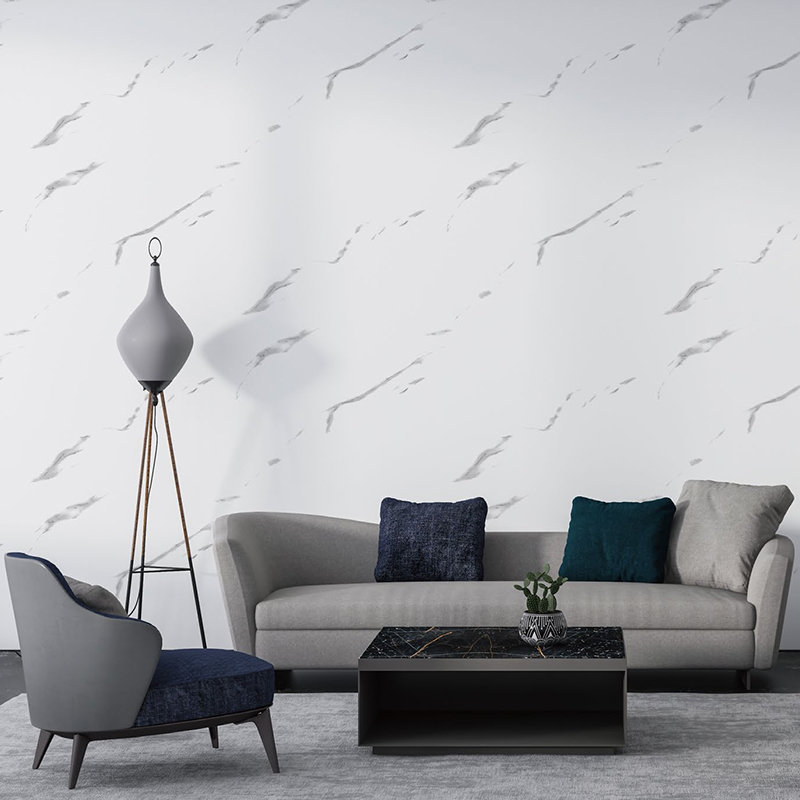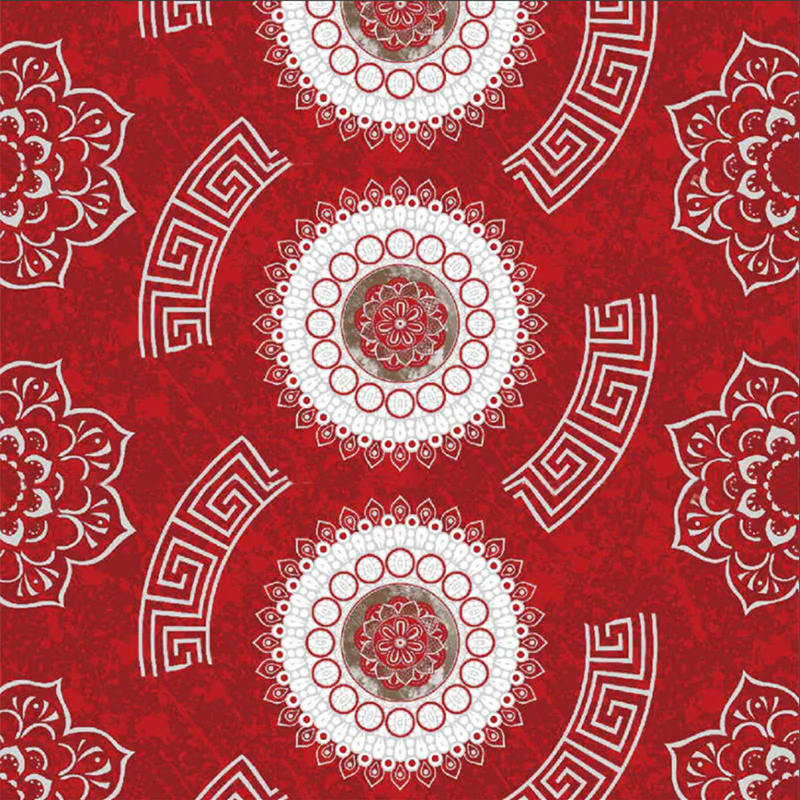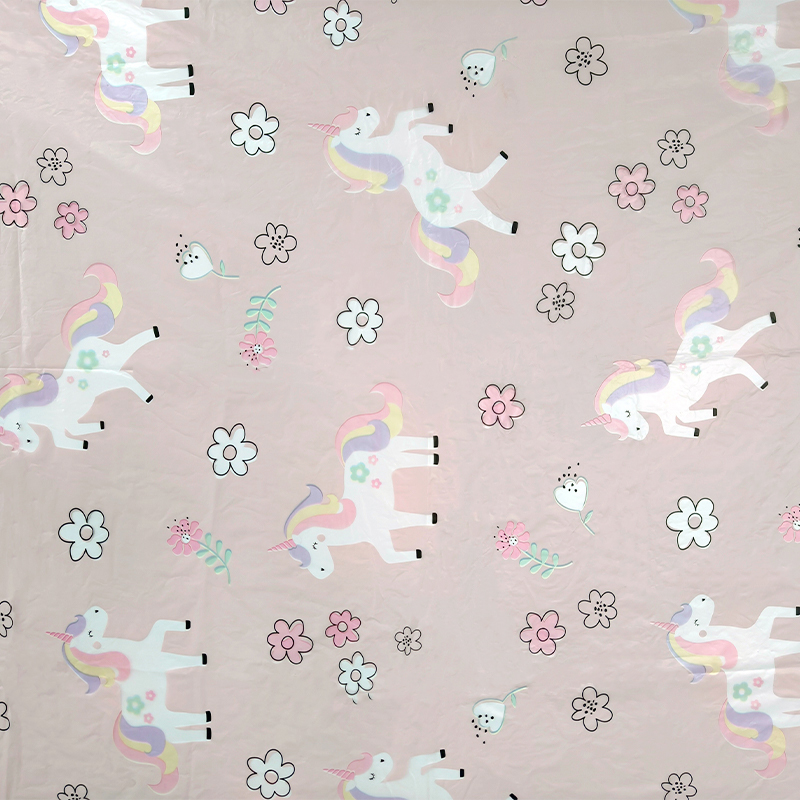Color print film is a specialized plastic film that features printed multicolor images, patterns, or texts applied using various printing technologies. It serves as a versatile substrate in many industries, combining the physical properties of plastic films with high-quality visual graphics to meet both functional and aesthetic demands.
Materials Used in Color Print Film
The base film is typically made from synthetic polymers, selected for their durability, clarity, and flexibility. Common materials include:
-
PVC (Polyvinyl Chloride): Offers excellent printability and good chemical resistance. Frequently used in packaging and decorative films.
-
PET (Polyethylene Terephthalate): Known for its high strength, dimensional stability, and excellent clarity. It supports high-resolution printing and is often used in food packaging and labels.
-
BOPP (Biaxially Oriented Polypropylene): Offers excellent moisture resistance, stiffness, and is cost-effective for large-scale printing in packaging.
-
Polyethylene (PE): Flexible and tough, often used in flexible packaging films.
-
Other specialty films: Such as Nylon, Polycarbonate, or Co-extruded multilayer films, depending on specific performance requirements.
Each of these materials can be transparent, opaque, or colored, providing additional design flexibility.
Printing Technologies for Color Print Film
The quality and type of print on the film depend heavily on the printing technology used. Common printing methods include:
-
Flexographic Printing: A high-speed, cost-effective process using flexible relief plates, ideal for printing on thin films. It allows vibrant colors and is widely used in packaging.
-
Gravure Printing: Uses engraved cylinders for very high-quality, detailed images and consistent ink coverage, suitable for long print runs of high-resolution graphics.
-
Screen Printing: Best for thick ink layers and special effects like metallics or textures, often used for decorative or industrial applications.
-
Digital Printing: Increasingly popular for short runs and customized prints, offering quick turnaround and the ability to print variable data without the need for printing plates.
-
Offset Printing: Sometimes adapted for films with special coatings, providing precise color registration and image sharpness.
Ink formulations used for printing on films are specially designed to adhere to plastic surfaces and provide durability against abrasion, moisture, and UV exposure.
Applications of Color Print Film
Color print films are utilized across diverse industries due to their versatility:
-
Flexible Packaging: For food, beverages, pharmaceuticals, cosmetics, and consumer goods, color print films provide branding, product information, and barrier properties.
-
Labels and Wrappers: Printed films serve as attractive labels or shrink sleeves enhancing product appearance on retail shelves.
-
Decorative Films: Used in interior design, automotive trims, electronic device covers, and furniture laminates to impart colorful patterns, textures, and finishes.
-
Advertising and Promotional Materials: Color print films form the basis for window graphics, banners, stickers, and point-of-sale displays.
-
Industrial Uses: Sometimes printed films are used for protective overlays, nameplates, or signage where both durability and visual appeal are required.
Advantages of Color Print Film
-
Customization & Brand Differentiation: Enables companies to apply high-quality, multicolor graphics that convey brand identity and product benefits clearly.
-
Lightweight & Flexible: Easy to handle, ship, and apply on various product shapes, reducing transportation and storage costs.
-
Durability & Resistance: Depending on the film and ink used, prints resist moisture, UV rays, chemicals, and abrasion, maintaining visual integrity throughout the product’s lifecycle.
-
Cost Efficiency: Suitable for mass production with rapid printing speeds, lowering per-unit costs while enabling large-scale distribution.
-
Sustainability Trends: Modern color print films can incorporate recyclable materials and eco-friendly inks to align with increasing environmental regulations.
Industry Trends and Innovations
The color print film industry is continuously evolving with advances such as:
-
Eco-friendly Films: Biodegradable and compostable films printed with water-based or UV-curable inks to reduce environmental impact.
-
Smart Films: Incorporation of functional layers for tamper evidence, anti-counterfeiting, or QR codes printed for interactive consumer engagement.
-
Enhanced Printing Techniques: Digital printing and hybrid methods improve print quality and allow smaller batch customization.
-
Multi-layer Films: Combining print films with barrier layers for improved product protection without compromising print quality.



 English
English Français
Français русский
русский عربى
عربى Español
Español











